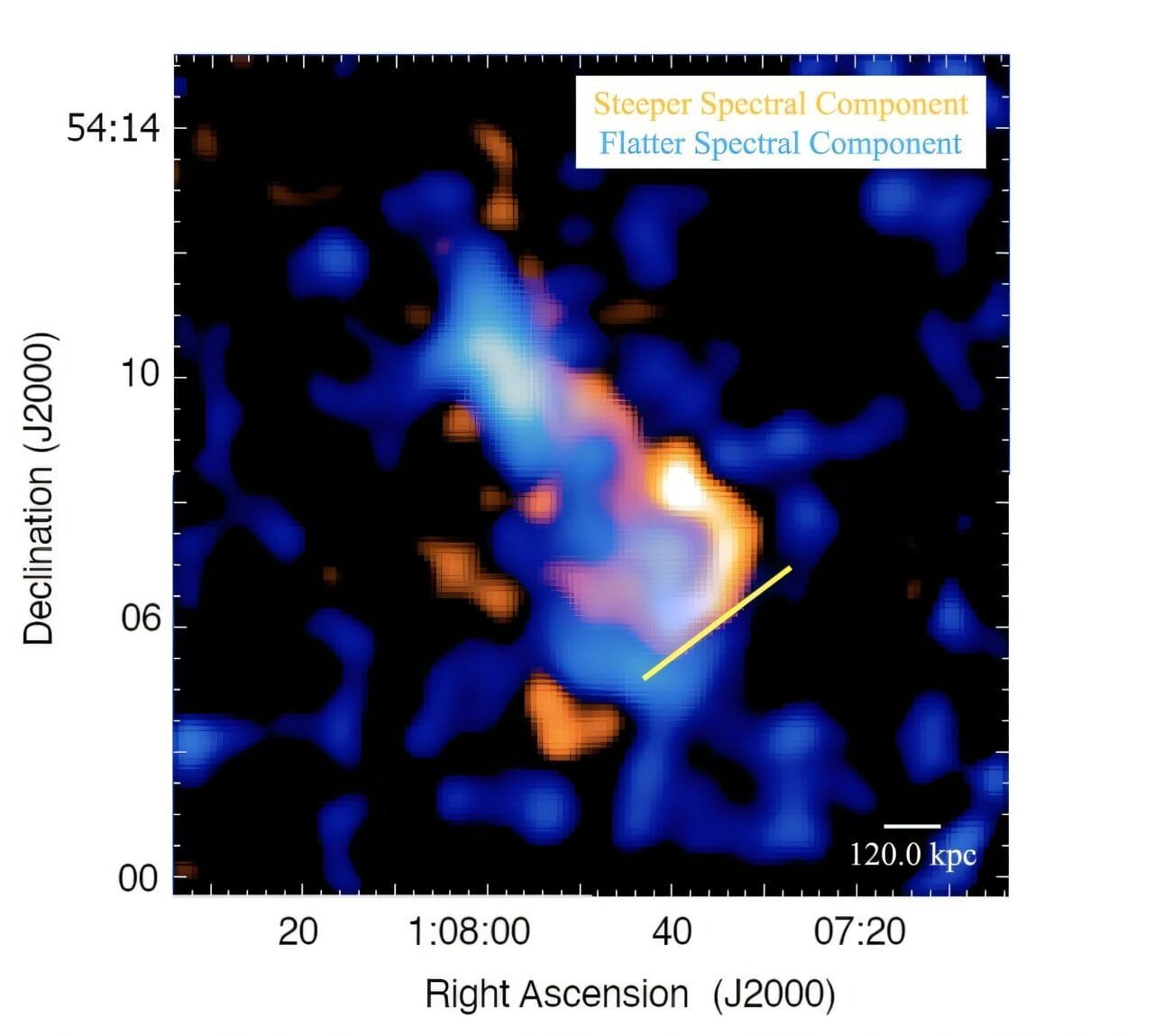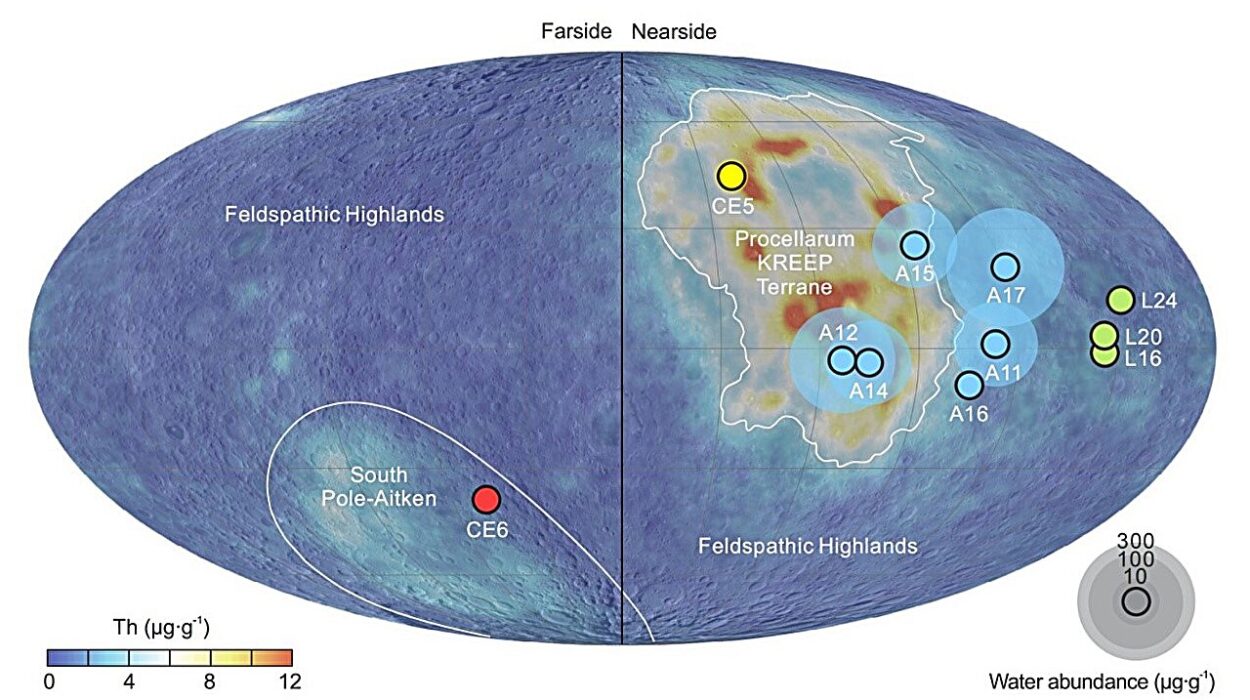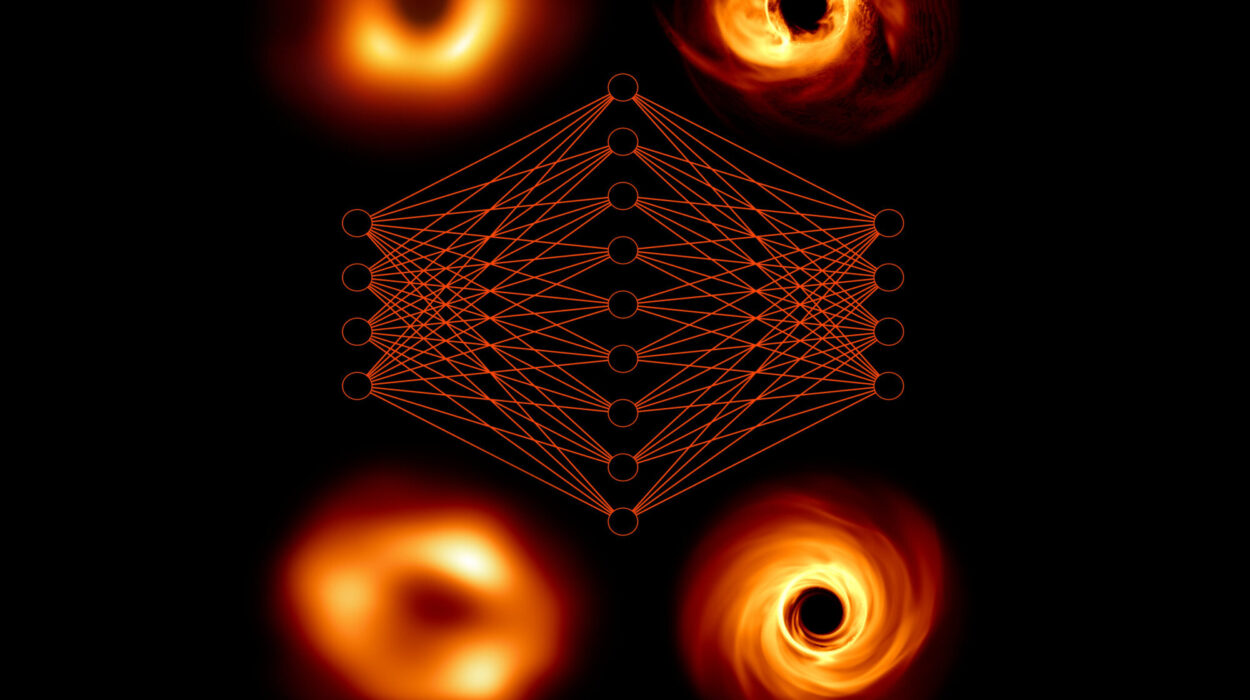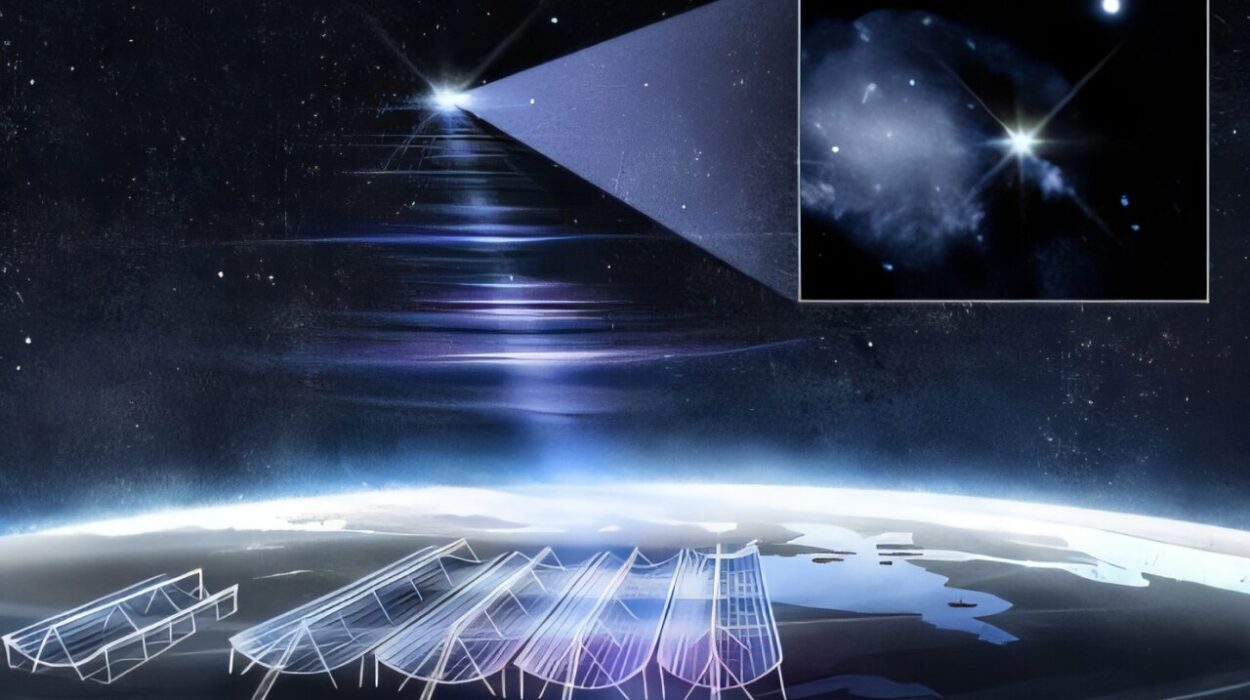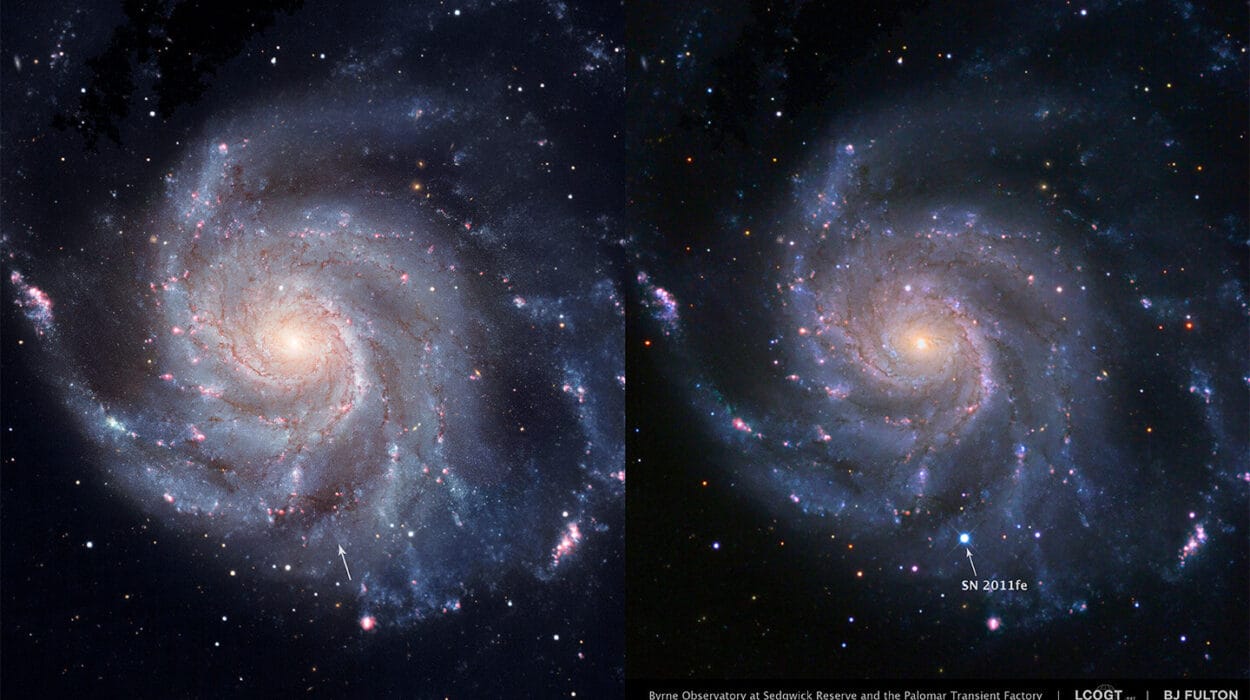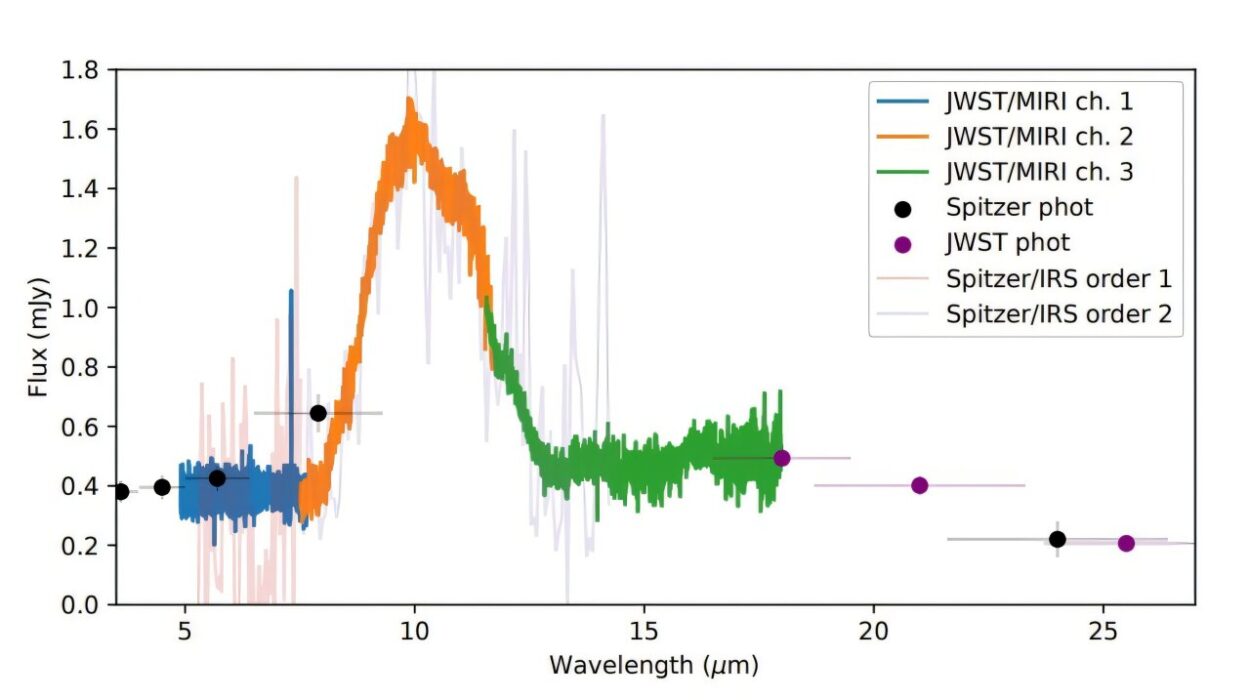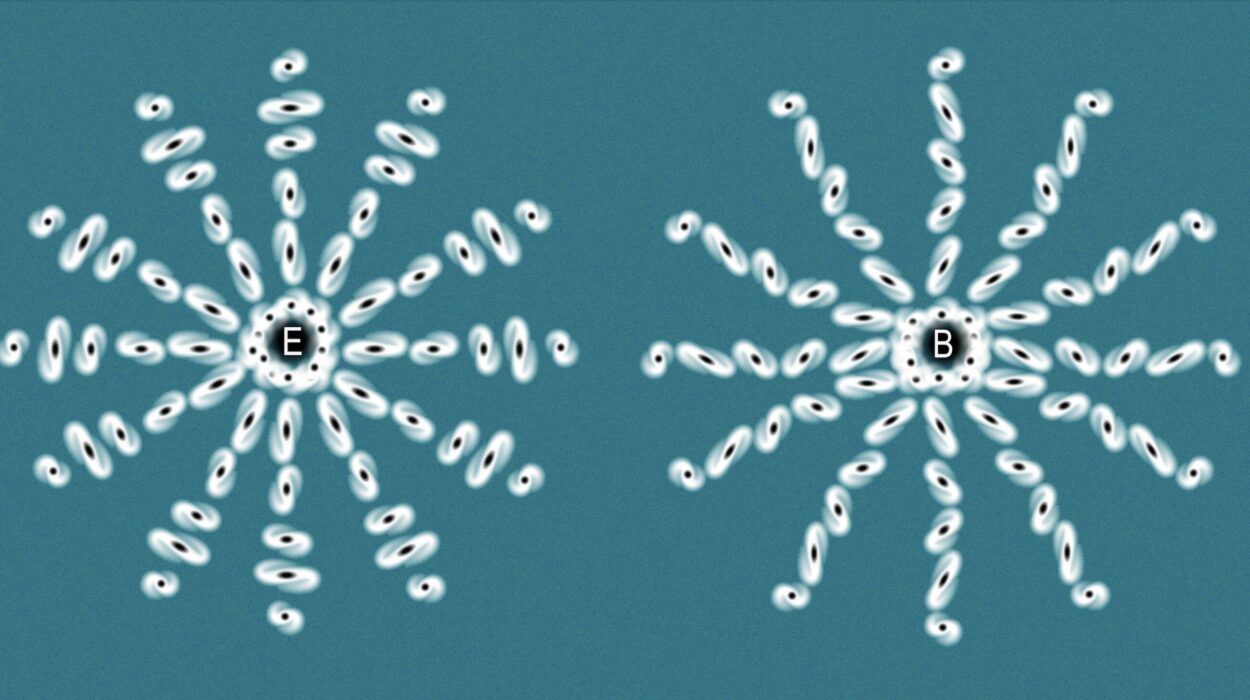An international team of astronomers, using the Very Large Array (VLA), recently observed a galaxy merger known as CIZA J0107.7+5408 (CIZA0107), providing new insights into the complex dynamics of merging galaxy clusters. This study, presented on December 20 on the preprint server arXiv, offers a closer look at the processes that occur when galaxy clusters collide, and it may significantly enhance our understanding of some of the most fundamental questions in astrophysics.
Galaxy clusters, which can contain thousands of galaxies bound together by gravity, are among the largest structures in the universe. These clusters are believed to form over time through the merger of smaller sub-clusters, with the largest clusters growing by accreting smaller ones. The resulting systems provide a natural laboratory for studying astrophysical phenomena that are difficult, if not impossible, to replicate in terrestrial labs. For example, merging galaxy clusters offer valuable opportunities to study the behavior of matter in extreme conditions, as well as to investigate important concepts such as shock waves, cosmic rays, and even the mysterious properties of dark matter.
CIZA0107, located at a redshift of approximately 0.1, is a post-core passage, dissociative binary cluster merger. This means that the system is in a later stage of its merger process, after the cores of the two subclusters have passed through each other, and it is now in the phase where the system is in the process of settling into a more stable configuration. The galaxy cluster is composed of two roughly equal mass subclusters, each with an optical density peak, but the associated X-ray emission peaks are offset from the optical centers. These complex features make CIZA0107 an ideal candidate for studying the physical processes occurring during a galaxy cluster merger.
To explore CIZA0107 in greater detail, a team of astronomers led by Emma Schwartzmann from the U.S. Naval Research Laboratory in Washington, D.C., employed the VLA to observe the system in two different frequency ranges: 240-470 MHz and 2.0-4.0 GHz. The aim of these observations was to map the diffuse radio emission emitted by the galaxy clusters, investigate the spectral properties of this emission, and better understand the physical conditions present in the merging system.
The results of the VLA observations revealed a highly disturbed and dynamically complex system, confirming that CIZA0107 is indeed a merger in progress. The images obtained by the team show the merger axis of the system stretching along the northeast-southwest direction, with the two subclusters exhibiting substantial disruptions in their structure due to the ongoing interaction. The images also showed diffuse radio emission in both of the subclusters on a scale of roughly 1.6 million light years. This emission is likely the result of cosmic ray particles being accelerated during the merger process, creating the large-scale radio structures observed in the system.
The team’s observations at 340 MHz and 3.0 GHz also revealed interesting features related to the emission spectrum. They detected diffuse emission in both subclusters of CIZA0107, with the most intense radio emission occurring near the central regions of each subcluster. Additionally, the astronomers observed two regions with ultra-steep spectrum emission, located to the northwest and southeast of the diffuse radio emission peak in the southwestern subcluster. These regions are particularly interesting because the steepness of the radio spectrum indicates that the emission is coming from aged or cooling particles, which can provide valuable insights into the energy history of the cluster.
One of the most intriguing findings of the study was the observation of a sharp radio edge in the southwestern subcluster at 340 MHz. This edge is likely associated with a shock front, which is a common feature in merging galaxy clusters. Shocks in the intra-cluster medium (the hot, diffuse gas that fills the space between galaxies in a cluster) are generated when the subclusters collide, compressing and heating the gas. The researchers found that at the higher frequency of 3.0 GHz, the radio emission did not show any features at the location of the shock front observed at 340 MHz. In fact, the diffuse emission appeared to extend beyond the shock, suggesting that the radio emission is not solely the result of the shock, but may also be influenced by other processes occurring in the cluster.
Based on these observations, the team proposed that CIZA0107 may host a double halo structure, meaning that the system could have two distinct radio halos that are either the result of separate relics or the projection of two emission regions onto the central cluster. This is a significant discovery, as radio halos are typically thought to be created by the acceleration of cosmic rays in the diffuse intra-cluster medium, and the presence of two halos could provide important clues about the merging process and the physical conditions within the cluster.
The findings from the VLA observations of CIZA0107 offer a wealth of new information that will help astronomers understand the physics of galaxy cluster mergers. These mergers are highly energetic events, and they can produce a variety of phenomena, such as shock waves, cosmic ray acceleration, and the generation of diffuse radio emission. By studying systems like CIZA0107, astronomers can gain a deeper understanding of these processes and learn more about the fundamental properties of galaxy clusters, including the behavior of dark matter.
The study also has implications for our understanding of cosmic ray acceleration in galaxy clusters. The diffuse radio emission observed in CIZA0107 is likely the result of cosmic rays being accelerated by the shocks and turbulence generated during the merger. This provides an excellent opportunity to study how cosmic rays are produced and how they interact with the surrounding environment. Additionally, the observations of ultra-steep spectrum regions offer insights into the long-term behavior of cosmic rays in the aftermath of a merger, as the steep spectral slopes indicate the presence of aging particles.
Furthermore, the research contributes to the ongoing investigation of dark matter, which remains one of the most elusive and mysterious components of the universe. Although dark matter cannot be directly observed, its presence is inferred through its gravitational effects on visible matter. The study of galaxy cluster mergers, such as CIZA0107, may help astronomers better understand the self-interaction properties of dark matter, which could shed light on its nature and behavior.
Reference: Emma Schwartzman et al, Multi-frequency Radio Observations of the Dissociative Cluster Merger CIZA J0107.7+5408, arXiv (2024). DOI: 10.48550/arxiv.2412.15015
